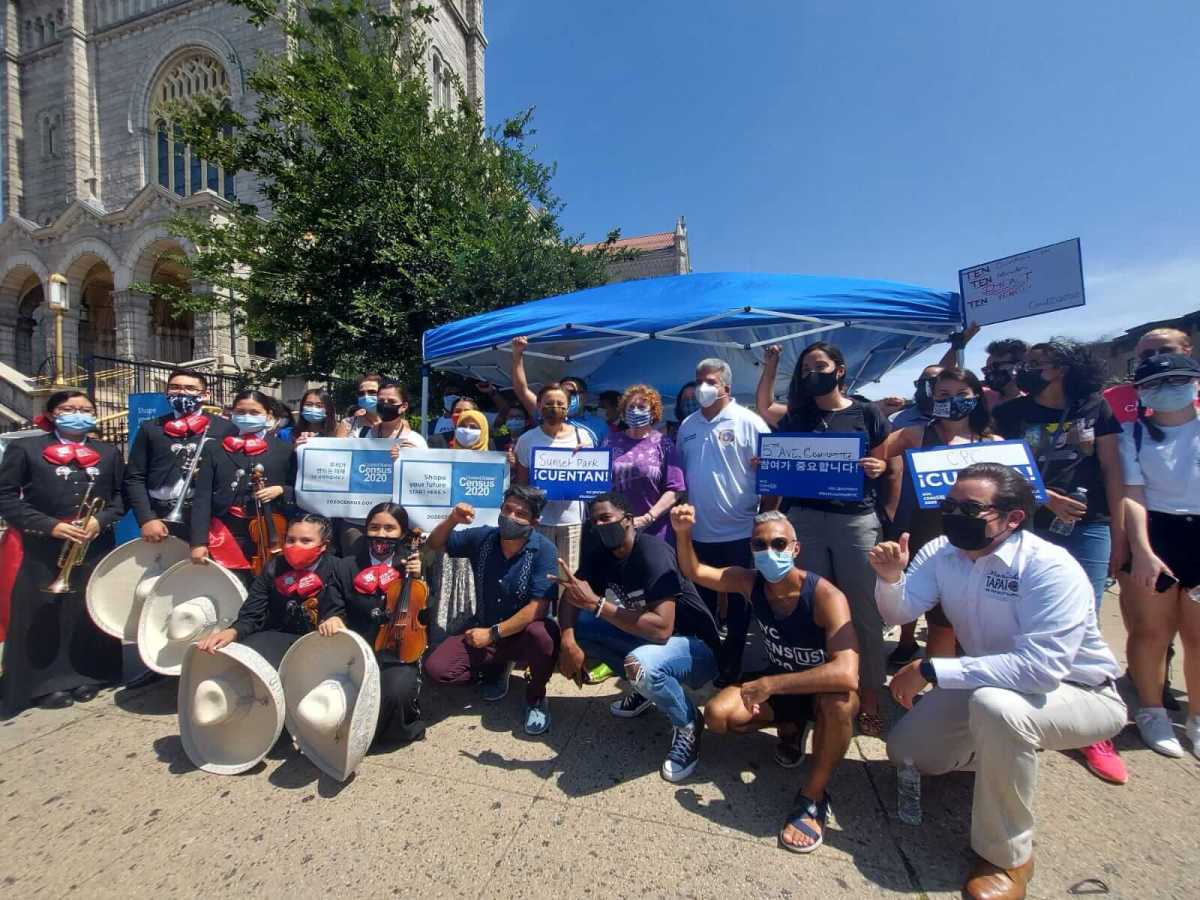New York City outperformed a number of major United States cities in terms of self-response rate to the 2020 Census.
Initially, the United States Census Bureau predicted that New York City would have a 58% response rate, which the city beat by four points. According to Julie Menin, Director of NYC Census 2020, New York City had a 61.8% self-response rate for the 2020 Census, which is a higher response rate than many other major U.S. cities, including Chicago (60.9%), Orlando (59.9%), Dallas (59.7%), Atlanta (59.7%), Boston (59.2%), Houston (58.9%), Los Angeles (58.6%), New Orleans (58.4%), Baltimore (57.0%), Philadelphia (56.9%), Miami (53.8%), Cleveland (51.4%), Detroit (51.0%), and Newark (50.9%).
“We’re fighting for our fair share of funding and political representation,” said Menin. “To be that prediction is really meaningful. With all of these different metrics, we outperformed where U.S. Census Bureau thought we would be and outperformed other cities.”
Menin says that this self-response rate is even more significant considering that New York City was shut down when counting began.
“Before COVID, we were going to open 300 centers to help New Yorkers complete the census — one-third of New Yorkers have less access to broadband,” said Menin. “Because of COVID, we couldn’t open the centers and had to pivot to virtual. New York was literally shut down for the whole beginning of the census because it was the epicenter. We were grappling with the biggest crisis our city has faced.”
NYC Census 2020 was able to back out of their contract with the MTA — they had originally planned on a subway ad campaign — and redirected those funds into digital and television ads, running 34 different media campaigns in 27 languages. Menin says that NYC Census 2020 phone banked over 4,000,000 calls and peer to peer texted 7 million New Yorkers to complete the census. They were able to do in-person canvassing by mid to late summer this year, and held 1,000 events — 100 of which in the last week of counting alone — to help hard-to-reach communities complete the census.
According to Menin, NYC Census also used apps like WhatsApp and WeChat to help reach New York City’s immigrant communities.
“We began utilizing these apps to reach these immigrant communities, using 15 different languages,” said Menin. “For all the misinformation that the Trump administration wrought around the census, from trying to add a question about citizenship and cutting the deadline short, all that served to create fear and intimidation. It was important that we were able to spread information that the census is confidential and safe to fill out.”
The efforts of NYC Census 2020 reached 472,000 households, which accounts for 1.2 million New Yorkers, without including who filled out the census as a result of their media campaigns. Menin says that every the number of responses results in $7,000 in funding per household and $2,700 per person. The digital ads they ran resulted in nearly 1 million clickthroughs to the Census Bureau’s website.
For New York City, the 61.8% self-response rate is the most accurate count the city will have because it is the result of people filling out the census online, calling the response hotline or filling out the census that was mailed to them. Though the Census Bureau says that 99.9% of New Yorkers were counted with the addition of door-knocking, Menin says door-knocking has proven to not be as reliable due to actions taken during the 2010 Census.
“Door-knocking data is not as reliable because legally door knockers could talk to a neighbor, ask if they know who lives there, and write it down as a completed form. That’s how over 1 million children were left out in 2010,” said Menin. “In past Census counts, standard practices require a certain number of failed attempts to answer do before speaking to a neighbor. If someone doesn’t answer, they can speak to neighbors to get data, which is a rushed and flawed practice. The Trump administration wants to undercount immigrant and people of color communities. Adding the citizen question, cutting short the census — all of these are part of the same attempt to undercount these communities.”
The 61.8% self-response rate does guarantee that New York gets the funding and representation it needs.
“This will result in New York City getting the funding and political representation we deserve,” said Menin. “In this current crisis, we can not afford to leave any dollar on the table.”
This story originally appeared on amny.com.
































